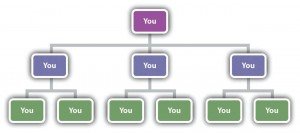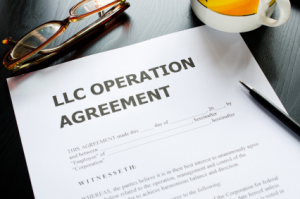One of the important decisions to be made while starting a business is the structure. The decision has to be made based on what legal structure you are using for starting your business. Since it is such a critical choice, you ought to get a qualified autonomous business, budgetary or lawful guide.
The structure you pick will rely on upon the size and kind of business, alongside your own circumstances and the amount you need to develop the business. Remember that if you have to, you can change your business structure later on if you find that another structure will address your issues better.
This choice you make can influence the amount you pay in duties, the measure of research material your business is obliged to do, the individual obligation you confront and your capacity to obtain cash. Business development is controlled by the law of the state where your business is composed.
This article gives a fast take a gander at the contrasts between the most widely recognized types of business elements.
The most well-known types of business are:
- Sole Proprietorships
- Associations
- Enterprises
- Restricted Liability Companies (LLC)
While state law controls the development of your business, government charge law controls how your business is exhausted. Government charge law perceives an extra business frame, the Subchapter S Corporation.
All organizations must record a yearly return. The structure you utilize relies on upon how your business is sorted out. Sole proprietorships and companies record a salary assessment form. Associations and S Corporations record a data return. For a LLC with no less than two individuals, aside from a few organizations that are consequently delegated an enterprise, it can decide to be grouped for duty purposes as either a company or an association. A business with a solitary part can decide to be named either an organization or slighted as a substance separate from its proprietor, that is, an ignored element. As a dismissed element the LLC won’t document a different return rather all the wage or misfortune is accounted for by the single part/proprietor on its yearly return.
The response to the inquiry “What structure bodes well?” relies on upon the individual circumstances of every entrepreneur.
The sort of business substance you pick will rely on upon:
- Risk
- Assessment
- Recordkeeping
- Sole Proprietorship
A sole proprietorship is the most well-known type of business association. It’s anything but difficult to shape and offers complete control to the proprietor. It is any unincorporated business claimed altogether by one person. As a rule, the proprietor is additionally actually obligated for every money related commitment and obligations of the business. Sole proprietors can work any sort of business. It must be a business, not a venture or diversion. It can be full-time or low maintenance work.
This incorporates:
- Shop or retail exchange business
- Huge organization with workers
- Home based business
- One individual counseling firm
Each sole proprietor is obliged to keep adequate records to follow government charge necessities in regards to business records.
Sole proprietors should likewise pay independent work impose on the net wage covered Schedule C or Schedule F. You might likewise have the capacity to deduct one-50% of SE duty on your 1040. Sole proprietors don’t have charges withheld from their business wage so you will for the most part need to make quarterly evaluated duty installments on the off chance that you hope to make a benefit. These evaluated installments incorporate both wage assessment and independent work charges for Social Security and Medicare.
Association
An association is the relationship existing between two or more persons who join to bear on an exchange or business. Every individual contributes cash, property, work or aptitude, and hopes to partake in the benefits and misfortunes of the business.
An organization does not pay any wage charge at the association level. Associations document Form 1065, U.S. Return of Partnership Income, to report wage and costs. Associations are frequently alluded to as go through or move through substances therefore. Every accomplice reports his offer of the organization net benefit or misfortune on his own Form 1040 assessment form. Accomplices must report their offer of organization pay regardless of the fact that a conveyance is not made.
Accomplices are not representatives of the association thus charges are not withheld from any disseminations. Like sole proprietors, accomplices by and large need to make quarterly evaluated expense installments in the event that they hope to make a benefit.
Partnership
A corporate structure is more perplexing than different business structures. It obliges following more regulations and assessment prerequisites. It may oblige more expense planning administrations than the sole proprietorship or the association.
Enterprises are shaped under the laws of every state and are liable to corporate salary charge at the government and for the most part at the state level. Also, any income circulated to shareholders as profits are exhausted at individual expense rates on their own assessment forms.
The enterprise is a substance that handles the obligations of the business. Like a man, the partnership can be burdened and can be held lawfully obligated for its activities. In the event that you compose your business as an organization, you are for the most part not actually obligated for the obligations of the partnership.
A partnership records Form 1120 or 1120-A, U.S. Company Income Tax Return. In the event that a shareholder is a worker, he pays pay charge on his wages, and the organization and the representative every pay one 50% of the standardized savings and Medicare charges and the enterprise can deduct its half. A corporate shareholder pays just pay charge for any profits got, which may be liable to a profits got finding.
Subchapter S Corporation
The Subchapter S enterprise is a variety of the standard company. The S partnership permits wage or misfortunes to be gone through to individual government forms, like an association. The standards for Subchapter S enterprises are found in Subchapter S of Chapter 1 of the Internal Revenue Code.
A S company has the same corporate structure as a standard partnership. It is a lawful substance, sanctioned under state law, and is isolated from its shareholders and officers. There is for the most part constrained risk for corporate shareholders. By and large, a S organization is excluded from government salary charge other than duty on certain capital additions and easy revenue. It is dealt with in the same route as an association, in that by and large duties are not paid at the corporate level.
A S partnership documents Form 1120S, U.S. Organization Income Tax Return for a S Corporation. The wage moves through to be accounted for on the shareholders’ individual returns. Plan K-1, Shareholder’s Share of Income, Credits and Deductions, is finished with Form 1120S for every shareholder.
Limited Liability Company
A Limited Liability Company (LLC) is a moderately new business structure permitted by state statute.
LLCs are mainstream on the grounds that, like an organization, proprietors for the most part have restricted individual obligation for the obligations and activities of the LLC. Different elements of LLCs are more like an association, giving administration adaptability and the advantage of go through assessment.
Proprietors of a LLC are called individuals. Since most states don’t limit proprietorship, individuals may incorporate people, companies, different LLCs and outside substances. A couple sorts of organizations by and large can’t be LLCs, for example, banks and insurance agencies. Check your state’s necessities and the government charge regulations for additional data. There are unique standards for remote LLCs. For extra data on the sorts of assessment forms to record, how to handle job assessments and conceivable pitfalls, allude to Publication 3402, Tax Issues for Limited Liability Companies.
![[Jcount.com]](https://www.jcount.com/wp-content/uploads/2014/08/jcount150X50.png)
![[Jcount.com]](https://www.jcount.com/wp-content/uploads/2014/08/jcountstartupslogo1.png)












